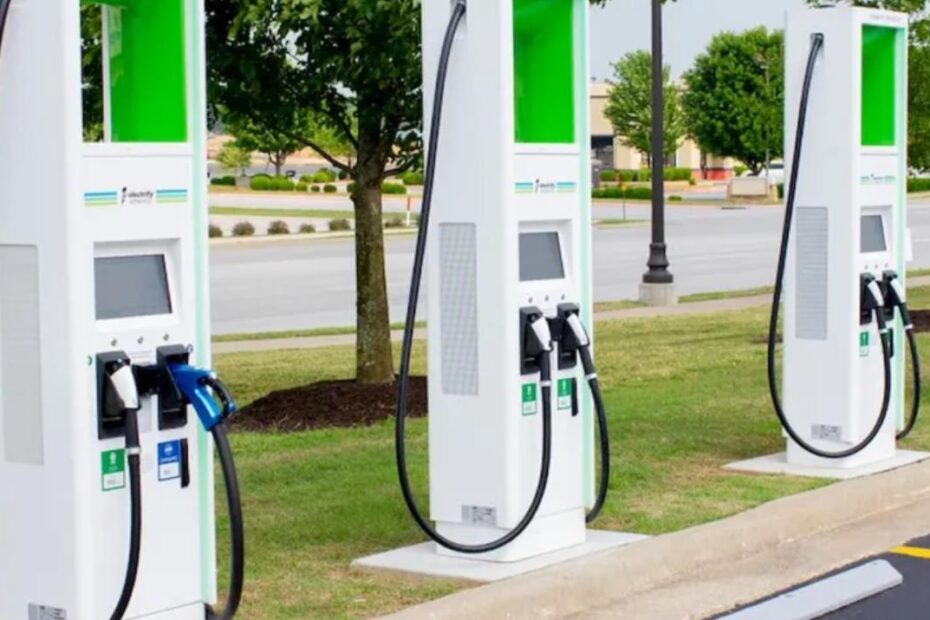This article will explain How To Invest In EV Charging Stations? The electric vehicle (EV) market is booming, and with it comes a growing demand for EV charging stations. Investing in EV charging stations is not just a trend but a lucrative business opportunity. This article will guide you through the ins and outs of investing in this emerging sector.
Key Takeaways
- EV charging stations offer a promising investment opportunity due to the rising popularity of electric vehicles.
- Various investment avenues are available, including direct ownership, stocks, and mutual funds.
- Government incentives can significantly lower the initial setup costs.
- Location and business model are crucial factors for profitability.
- Due diligence and market research are essential steps before investment.
How To Invest In EV Charging Stations?
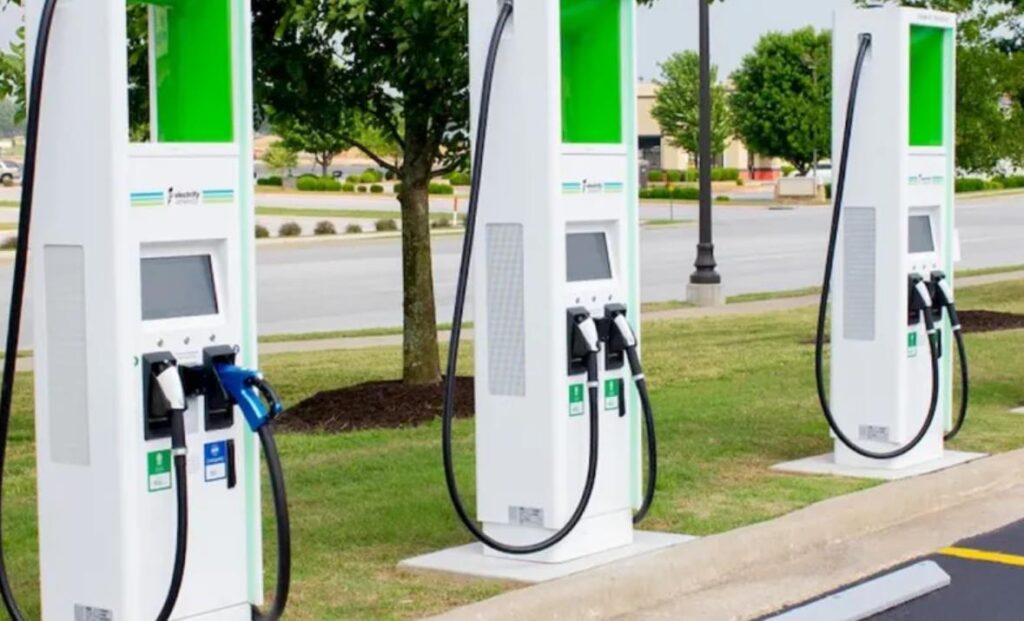
Conduct Market Research
The first step in investing in EV charging stations is to conduct comprehensive market research. This involves identifying potential locations, understanding the local demand for EV charging, and analyzing competitors in the area.
High-traffic locations like shopping malls, restaurants, and highways are ideal. Use data analytics tools to assess the feasibility and profitability of your chosen location.
Secure Permits and Approvals
Once you’ve identified a suitable location, the next step is to secure all necessary permits and approvals from local and state authorities.
This may include zoning permits, electrical permits, and even special permits for handling high-voltage equipment. Consult with legal experts to ensure that you comply with all regulations.
Choose Technology and Partners
Decide on the type of charging station technology you want to invest in—Level 1, Level 2, or DC fast chargers. Each has its pros and cons in terms of charging speed and installation cost.
Consider partnering with established EV charging network providers like ChargePoint, Tesla, or Blink for technology solutions and operational support.
Apply for Grants and Incentives
The federal government and many state governments offer grants, tax credits, and other financial incentives for installing EV charging stations.
The Infrastructure Investment and Jobs Act, for instance, has allocated funds specifically for this purpose. Apply for these grants to offset your initial investment costs.
Installation and Setup
After securing funding and permits, proceed with the installation of the charging stations. This involves site preparation, electrical work, and the actual installation of the charging equipment. It’s advisable to hire certified professionals for this job to ensure safety and compliance with regulations.
Set Pricing Model
Once your charging station is operational, decide on a pricing model. You can offer free charging as a value-added service to attract customers to your primary business, or you can charge users based on the amount of electricity they consume. Subscription models are also an option.
Monitor and Optimize
After the station is up and running, it’s crucial to monitor its usage and financial performance. Use analytics tools to track key performance indicators like the number of charging sessions, electricity consumed, and revenue generated. Use this data to optimize pricing, offer promotions, or make other operational adjustments.
What Are EV Charging Stations?
An Electric Vehicle (EV) Charging Station is essentially a gas station for electric cars. It’s where you recharge your electric vehicle’s battery.
According to the U.S. Department of Energy, most EV owners have charging stations at home, but there are also tens of thousands of public and workplace charging stations across the country.
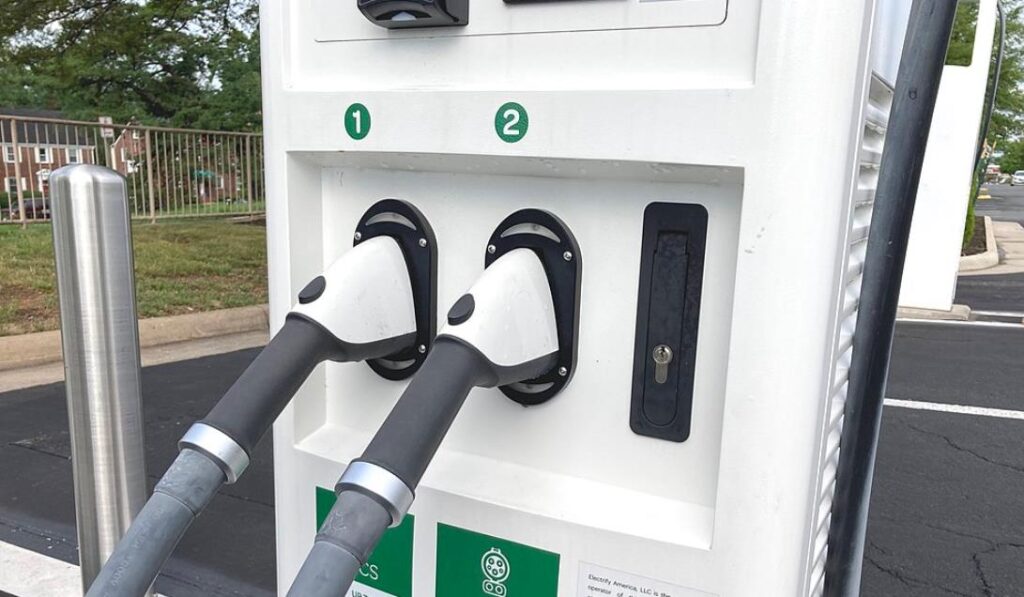
The process of charging an EV is more akin to recharging your smartphone. You might have a charger at home and another at your workplace, similar to how you’d have a residential and a public EV charging station.
Why Invest in EV Charging Stations?
The EV market is experiencing exponential growth. According to the U.S. Bureau of Labor Statistics, the percentage of electric car sales has surged from 0.2% in 2011 to 4.6% in 2021. This growth trajectory suggests that EV charging stations are a wise investment for both individual and institutional investors.
Factors To Consider Before Investing In EV Charging Station
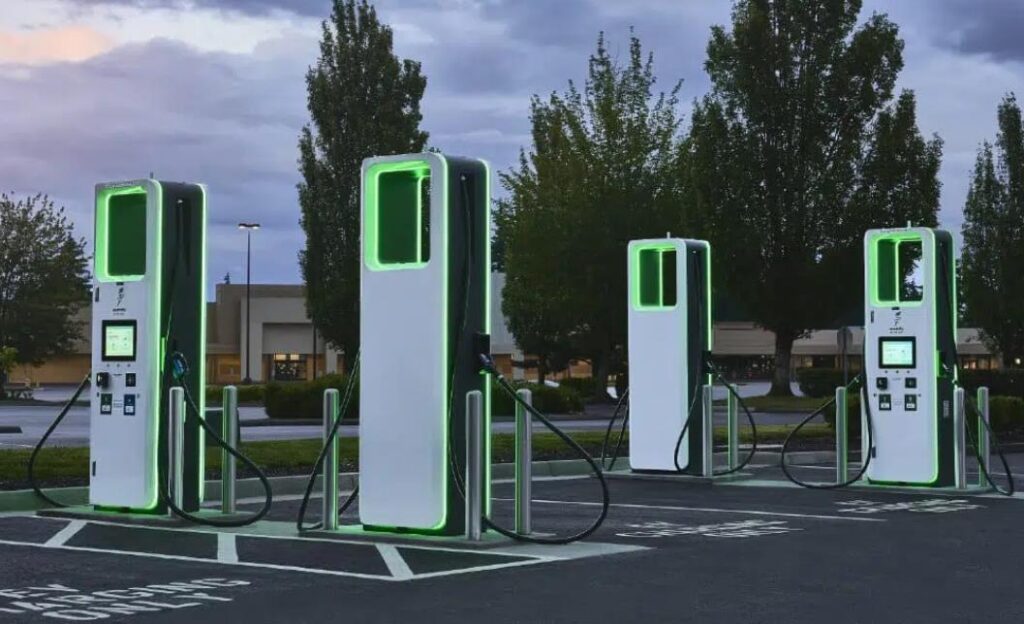
Investment Avenues
Direct Ownership
If you’re a business owner, installing an EV charging station can serve as an additional revenue stream. Charging stations can also attract more customers to your establishment, increasing overall profitability.
Stock Investments
Companies like Tesla, ChargePoint, and Tritium are leading the way in EV charging technology. Investing in their stocks can be a less hands-on way to capitalize on this growing market.
Government Incentives
The Infrastructure Investment and Jobs Act has allocated $7.5 billion for the development of a national EV charging network. This act also offers tax credits for EV buyers, making it an opportune time to invest in EV charging stations.
Location Matters
The profitability of your EV charging station largely depends on its location. High-traffic areas like shopping malls, restaurants, and highways are ideal locations. The location should also be convenient for potential users to access.
Business Models
There are various business models you can adopt for your EV charging station. You can offer free charging as a value-added service or charge users based on the electricity they consume. Subscription models are also gaining popularity.
Due Diligence
Before diving into this investment, it’s crucial to conduct thorough market research. Understand your target audience, analyze competitors, and assess the overall market conditions. This will help you make an informed decision.
Financing Options
When it comes to investing in EV charging stations, financing is a critical aspect to consider. Traditional loans, venture capital, and even crowdfunding are viable options. Each financing method has its pros and cons, so it’s essential to choose one that aligns with your investment goals and risk tolerance.
Venture capital can provide significant funding but often requires giving up equity in your business. On the other hand, traditional loans offer more control but come with the burden of interest payments. Crowdfunding is a modern approach that leverages social proof but requires a strong marketing strategy to succeed.
Technology Considerations
The technology behind EV charging stations is continually evolving. Level 1, Level 2, and DC fast chargers are the primary types of charging stations. Level 1 chargers are the slowest, while DC fast chargers offer rapid charging but are more expensive to install.
When investing, it’s crucial to stay updated on the latest technological advancements. For instance, some new chargers offer solar-powered options, which can be more sustainable and cost-effective in the long run. Make sure to invest in technology that not only meets current demands but is also future-proof.
Partnerships and Collaborations
Forming strategic partnerships can be a game-changer for your EV charging station investment. Collaborating with local governments, utility companies, or even other businesses can offer mutual benefits. These partnerships can help in cost-sharing, increasing customer reach, and even securing better locations.
For example, a partnership with a utility company could result in subsidized electricity rates, making the operation more profitable. Similarly, collaborating with shopping malls or restaurants can provide high-traffic locations, ensuring more frequent use of the charging stations.
Marketing and Branding
A well-thought-out marketing strategy can significantly impact the success of your EV charging station investment. Utilizing social media, SEO, and even traditional advertising methods can help create brand awareness and attract more customers.
Don’t underestimate the power of branding. A recognizable and trusted brand can command higher prices and customer loyalty. Consider investing in professional branding services to create a compelling and memorable brand image.
Regulatory Compliance
Understanding and complying with local, state, and federal regulations is crucial for the smooth operation of your EV charging station. Failure to comply can result in hefty fines and even legal action. Therefore, it’s essential to consult with legal experts to ensure that your investment is compliant with all relevant laws and regulations.
For instance, some states require specific permits and inspections before an EV charging station can become operational. Make sure to research and fulfill all legal obligations to avoid any future complications.
Risk Assessment
Investing in any business comes with its set of risks, and EV charging stations are no exception. Market volatility, technological changes, and regulatory shifts are some of the risks involved. Therefore, a comprehensive risk assessment is crucial before making your investment.
Consider hiring financial and market analysts to evaluate the potential risks and returns. This will not only help you make an informed decision but also prepare you for any market fluctuations.
Are EV Charging Stations Good Investments?
Absolutely, EV Charging Stations are promising investments, especially as the demand for electric vehicles surges. Data from the U.S. Bureau of Labor Statistics shows that electric cars made up 0.2% of all car sales in the U.S. in 2011. By 2021, that number had risen to 4.6%.

Projections suggest that by 2023, EVs could constitute as much as 52% of all car sales. The Infrastructure Investment and Jobs Act has also allocated a tax credit of up to $7,500 for EV buyers and committed $7.5 billion to build out national EV charging infrastructure. These factors make investing in EV charging stations a savvy move.
Why Do We Need To Invest In Charging Stations For Electric Cars?
The surge in electric vehicle (EV) adoption is undeniable, making the investment in EV charging stations increasingly crucial. According to the U.S. Department of Energy, while most EV owners have home-based charging stations, tens of thousands of public and workplace charging stations are also available.
These stations serve as vital infrastructure, enabling longer trips and reducing range anxiety for EV owners. The need for more charging stations is also fueled by government policies, such as the Infrastructure Investment and Jobs Act, which has committed $7.5 billion to build out national EV charging infrastructure.
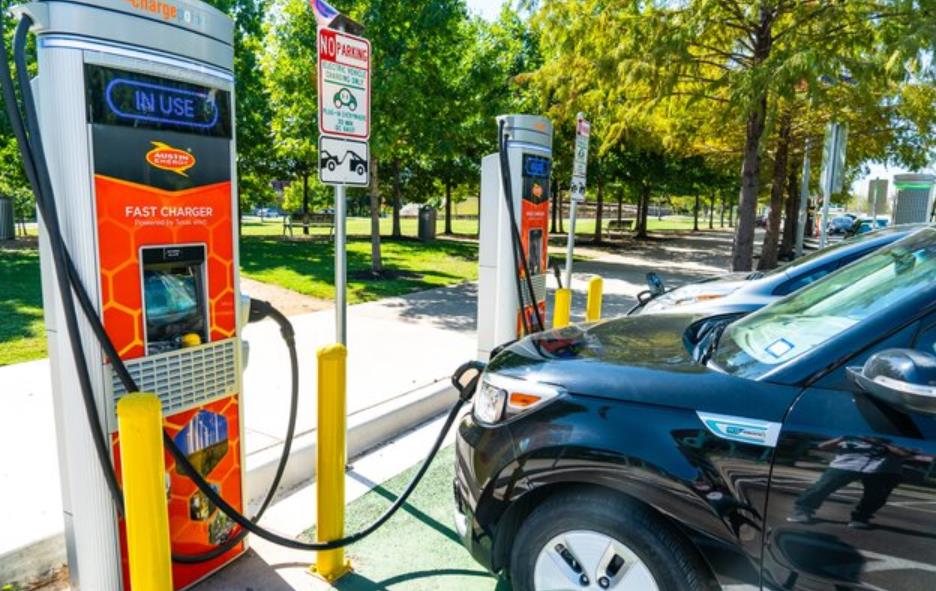
Moreover, the market share of EVs is expanding rapidly. Data from the U.S. Bureau of Labor Statistics shows that EVs accounted for 0.2% of all car sales in the U.S. in 2011, and this figure rose to 4.6% by 2021.
Some projections even suggest that EVs could make up as much as 52% of all car sales by 2023. This growth in EV adoption amplifies the need for a robust charging infrastructure, making it a wise investment for both the public and private sectors.
Can You Make Money Owning An EV Charging Station?
Absolutely, owning an EV charging station can be a lucrative venture. The Infrastructure Investment and Jobs Act has set aside $1.5 billion to help states build and expand their EV charging networks.
This financial support can significantly offset the initial installation costs. Once operational, you can charge users for the electricity they consume, much like a traditional gas station. But the revenue streams don’t end there.
Imagine you own a restaurant and install a charging station. A driver looking for a charging point might decide to dine at your restaurant while their car charges.
This strategy can apply to various retail establishments, including shops, bars, and convenience stores, effectively increasing foot traffic and customer base. If direct ownership isn’t appealing, you can also invest in companies that manufacture and sell charging equipment, like Tesla or Chargepoint, by purchasing their stock.
Conclusion
Investing in EV charging stations is a promising venture, given the rapid adoption of electric vehicles. Whether you’re an individual investor or a business owner, now is the perfect time to explore this opportunity. With proper planning and execution, your investment could yield significant returns.
People Also Ask
How Do I Assess My Business’ EV Charging Needs?
Before diving into the investment, it’s crucial to evaluate your specific requirements. The number of electric vehicles you plan to accommodate will determine the number of charging stations you’ll need. For instance, you might need at least 3 charging stations for every 10 vehicles. Also, consider the speed of the charging station, as this will influence the number of stations required.
What Types of Charging Stations Are Available?
There are primarily three types of charging stations: Level 1, Level 2, and Level 3 DC fast chargers. Level 1 is the slowest and often too slow for business needs, taking up to 50+ hours for a full charge. Level 2 can take up to 10 hours, while Level 3 can charge a vehicle from 20% to 80% in 30 minutes to 1 hour. Choose the type that aligns with your business operations.
What Are the Costs Involved in Setting Up a Charging Station?
The costs go beyond just the equipment. Level 1 chargers are the cheapest but offer slow charging speeds. Level 2 chargers can cost up to $2,000, not including labor and electrical work. Level 3 chargers are the most expensive, with total costs reaching up to $120,000, including extensive electrical work and permitting.
Are There Any Government Incentives or Grants?
Yes, many governments and organizations offer financial support, grants, and tax credits to businesses investing in EV charging infrastructure. These incentives can significantly offset the costs of installation and operation.
How Can I Optimize the User Experience at My Charging Station?
User experience is crucial for attracting and retaining customers. Consider factors like user-friendly interfaces, reliable connectivity, multiple payment options, and customer support. These elements contribute to a positive charging experience and can keep customers coming back.

Muhammad Talha Naeem is a seasoned finance professional with a wealth of practical experience in various niches of the financial world. With a career spanning over a decade, Talha has consistently demonstrated his expertise in navigating the complexities of finance, making him a trusted and reliable figure in the industry.
